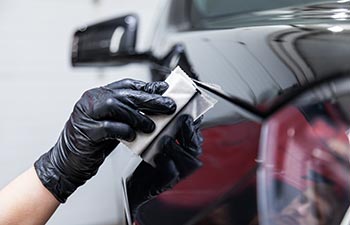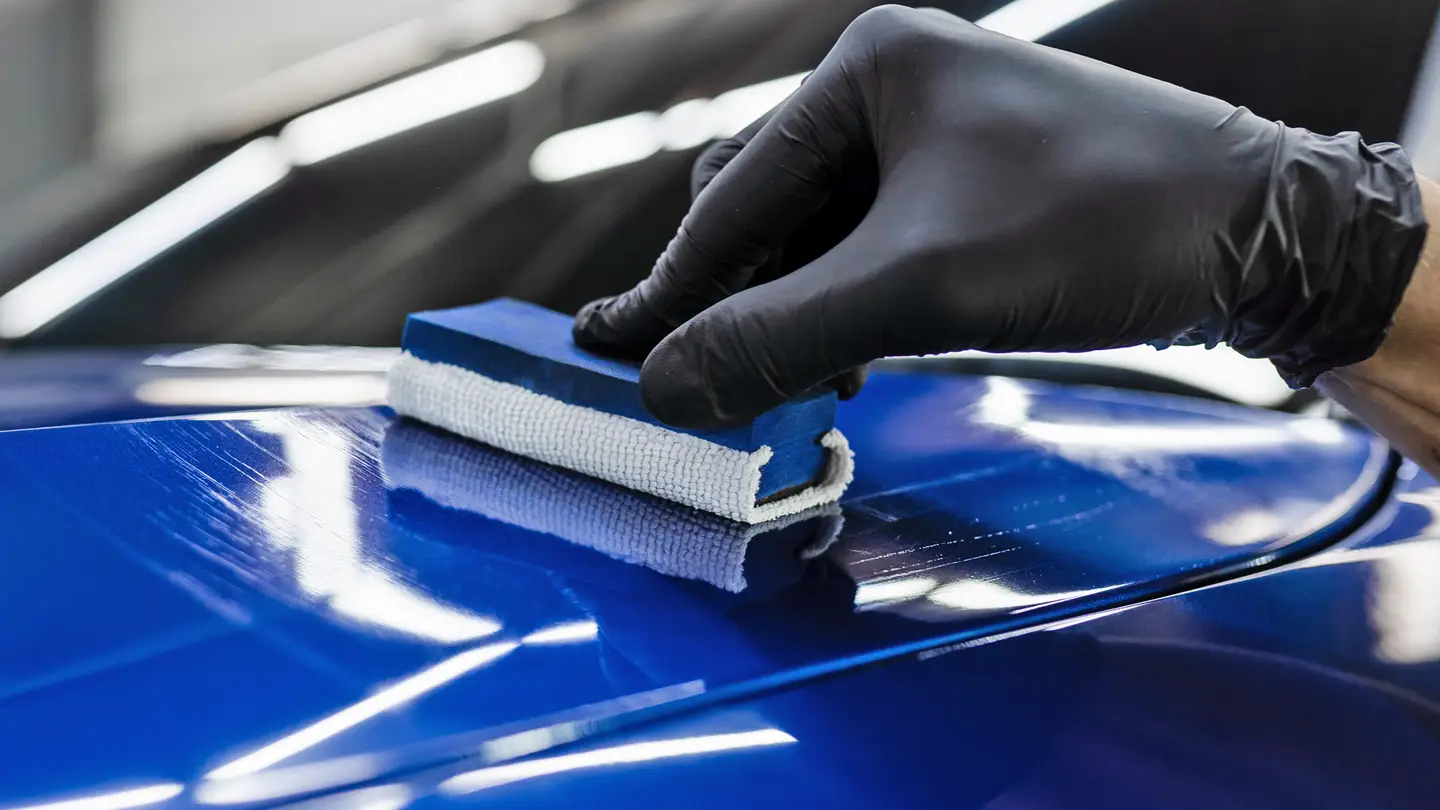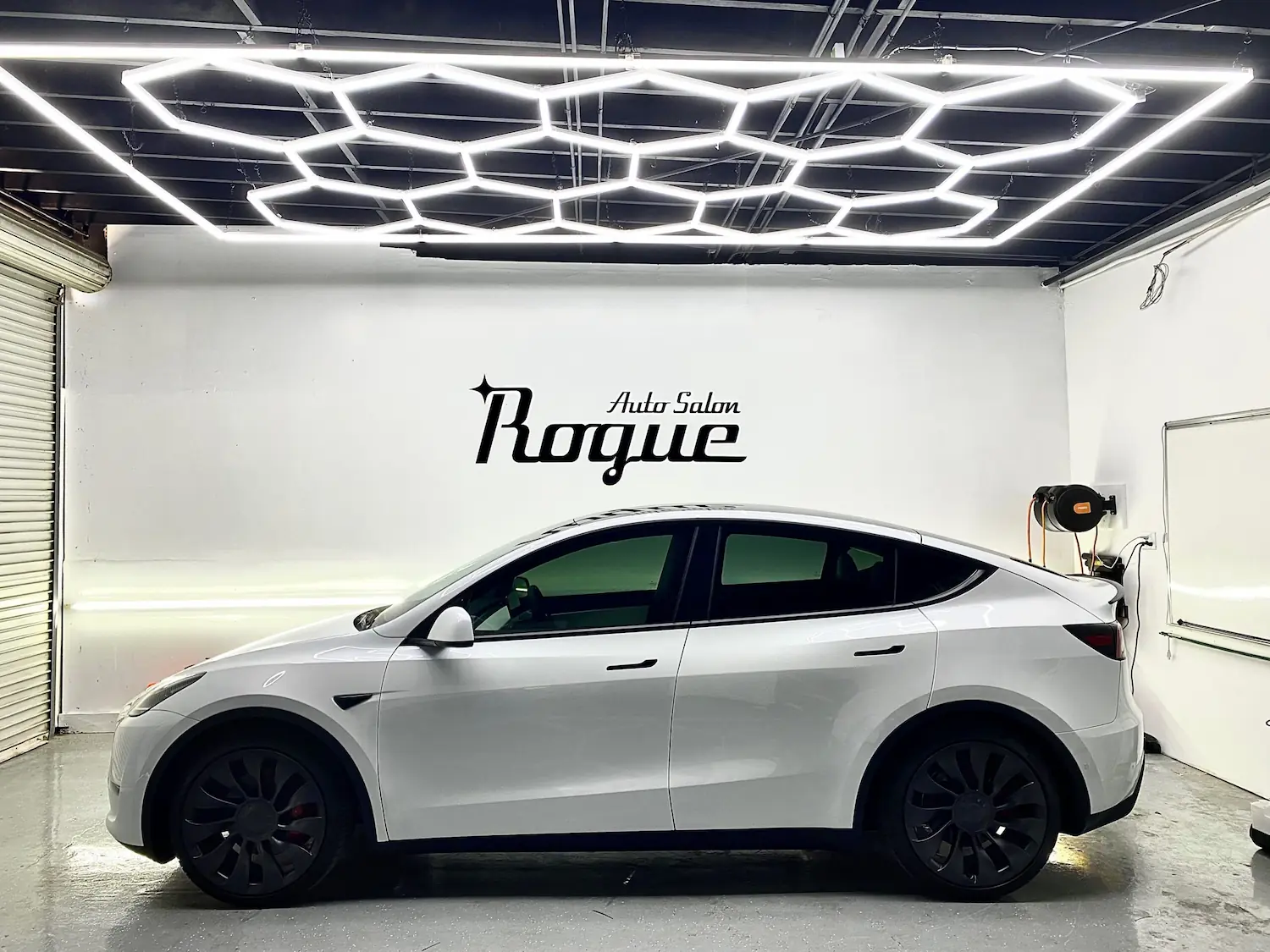Autocare
Can You Wax Paint Protection Film for Extra Gloss? A Detailer’s Guide
What You Need to Know Before Waxing Over PPF
When it comes to preserving the pristine look of your vehicle, few products rival the effectiveness of Paint Protection Film (PPF). However, one question continues to arise among car owners and detailers alike: can you wax paint protection film to enhance its gloss and longevity?
The short answer is yes, but the long answer involves knowing the right techniques, products, and timing to ensure you’re not doing more harm than good.
In this guide, we’ll break down everything you need to know about waxing PPF, from its benefits and best practices to common mistakes to avoid. Whether you’re a seasoned detailer or a weekend car care warrior, this blog will help you get the most shine and protection out of your PPF.
What Is Paint Protection Film?
Before diving into waxing, let’s quickly revisit what Paint Protection Film actually is.
PPF is a transparent, thermoplastic urethane film applied to a vehicle’s painted surfaces. Originally developed for military use, it’s now widely adopted in the automotive world to shield cars from:
- Stone chips and minor abrasions
- Bird droppings and bug splatter
- UV rays, acid rain, and road debris
Modern PPFs are more than just invisible armor; they come with advanced features, such as self-healing properties, hydrophobic surfaces, and custom finishes (matte, satin, and gloss).
When installed and maintained properly, PPF can last anywhere from 5 to 10 years, making it a smart investment for long-term vehicle protection.
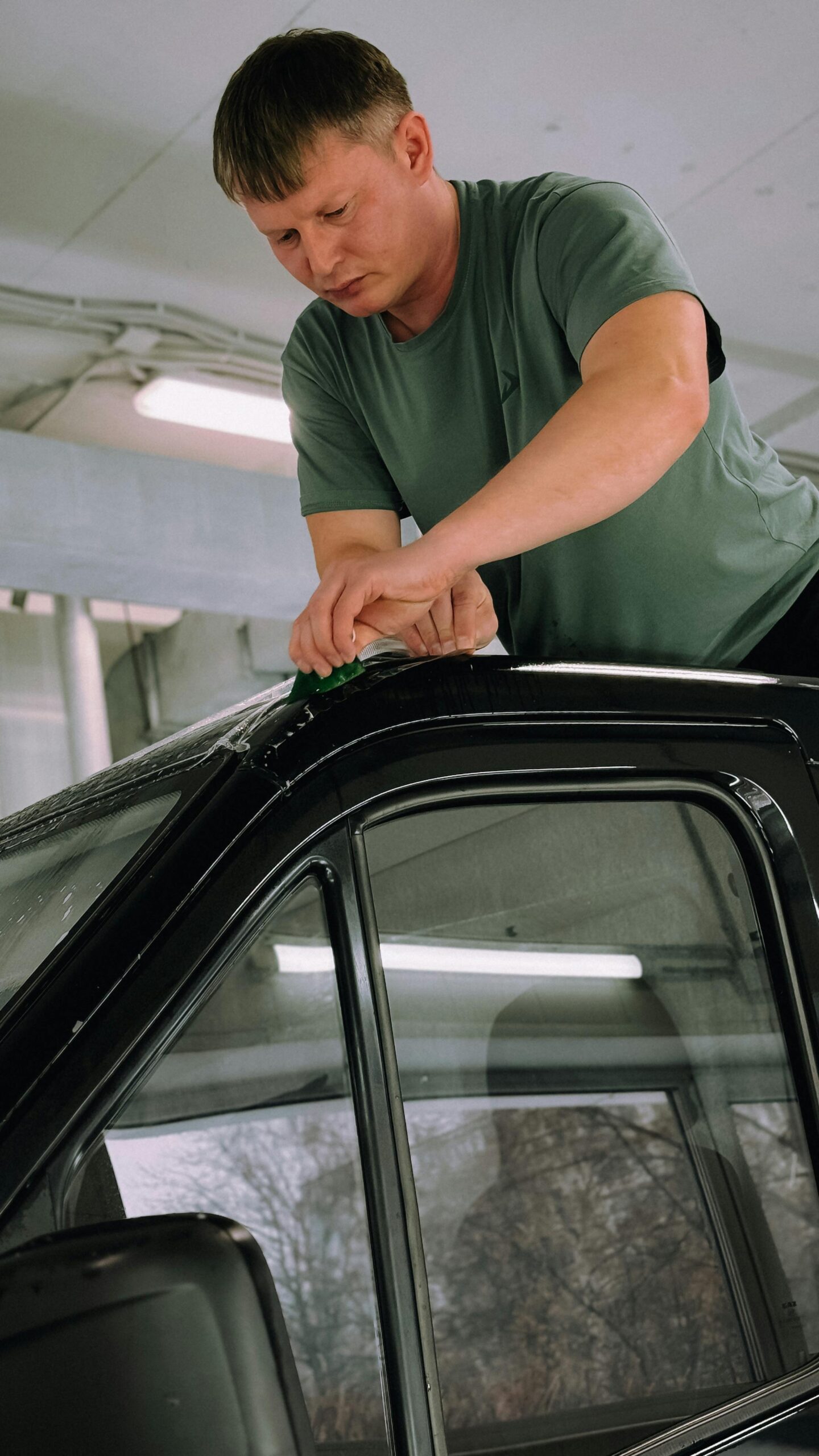
Can You Wax Paint Protection Film?
Yes, you absolutely can wax paint protection film, but it’s not as simple as grabbing any old wax off the shelf. PPF is a specialized surface, and using the wrong products or techniques can lead to discoloration, residue buildup, or even damage.
Why Wax PPF?
Waxing over PPF offers several benefits:
- Extra Protection: Adds another layer against contaminants like dust, dirt, and UV rays.
- Enhanced Gloss: Amplifies the shine, making your car look freshly detailed.
- Prolonged Lifespan: Maintains the flexibility of the film and helps prevent yellowing or fading.
So while PPF already does a great job of protecting your paint, waxing it can take your car’s appearance and durability to the next level.
Choosing the Right Wax for PPF
Not all waxes are created equal—especially when it comes to PPF. Here’s what to look for:
Safe Wax Types
- Carnauba-based waxes: Natural and gentle, these are generally safe for PPF.
- High-quality synthetic waxes: Designed for durability and shine without harsh chemicals.
- PPF-specific waxes: Some brands offer waxes formulated specifically for use on clear bras and vinyl films.
What to Avoid
- Waxes with petroleum distillates, strong solvents, or abrasives
- Products containing dyes that can stain or discolor the film
- Heavy-duty polishes not labeled safe for PPF
Always read the label and choose products that explicitly state compatibility with PPF or vinyl surfaces.
How to Wax Paint Protection Film: Step-by-Step
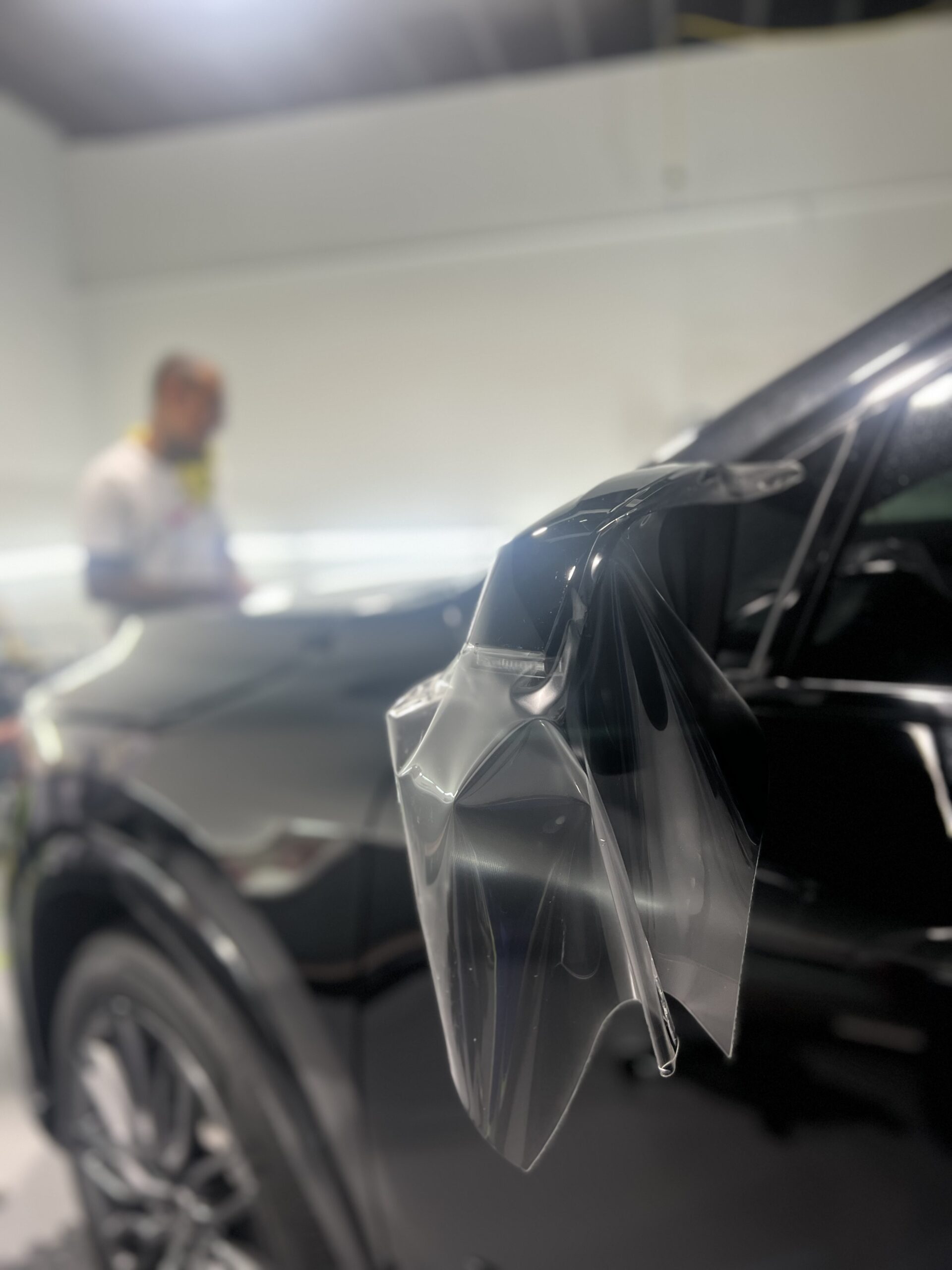
Waxing PPF isn’t rocket science, but it does require a thoughtful approach. Here’s a simple, effective process to follow:
- Clean the Surface Thoroughly
Start with a gentle car wash using pH-balanced shampoo. Avoid harsh soaps or chemicals that could degrade the film. Use the two-bucket method to minimize swirl marks and scratches.
- Dry with Care
Use a microfiber towel or a car blower to dry the surface. Avoid rubbing too hard, especially near the edges of the film.
- Apply the Wax
- Use a soft microfiber applicator or foam pad.
- Apply a thin, even layer of wax; less is more.
- Work in small sections to ensure full coverage.
- Let It Cure
Allow the wax to dry according to the manufacturer’s instructions. This usually takes a few minutes, depending on the product and temperature.
- Buff Gently
Buff off the wax using a clean microfiber towel in overlapping motions. Avoid excessive pressure, especially near film edges, to prevent lifting or damage.
Ceramic Coating vs. Wax: Which Is Better?
While waxing is effective, many professionals now recommend ceramic coatings as a longer-lasting alternative. These coatings are designed specifically for PPF and offer:
- Hydrophobic properties: Repels water and contaminants
- UV resistance: Prevents fading and discoloration
- Extended durability: Lasts up to 2 years or more
If you’re looking for a low-maintenance solution with superior protection, ceramic coating might be worth considering. However, waxing remains a great option for those who enjoy regular detailing and want that deep, glossy finish.
Professional vs. DIY Waxing
While DIY waxing is totally doable, professional services offer some advantages:
- Access to PPF-safe products not available in stores
- Controlled environments (temperature and lighting) for optimal results
- Trained technicians who know how to avoid common mistakes
At detailing shops like Rogueautosalon, waxing is done in temperature-controlled, shaded facilities to prevent premature drying and streaking. Our experts use gentle techniques and high-quality waxes to ensure your PPF stays protected and glossy.
Common Mistakes to Avoid
Even with the best intentions, it’s easy to make mistakes when waxing PPF. Here’s what to steer clear of:
- Using high-pressure washers near film edges
- Applying wax with abrasive pads or dirty cloths
- Using solvent-based cleaners or harsh chemicals
- Over-waxing: Too frequent waxing can lead to buildup and hazing
- DIY repairs: If the film lifts or bubbles, consult a professional
Final Thoughts: Can You Wax Paint Protection Film?
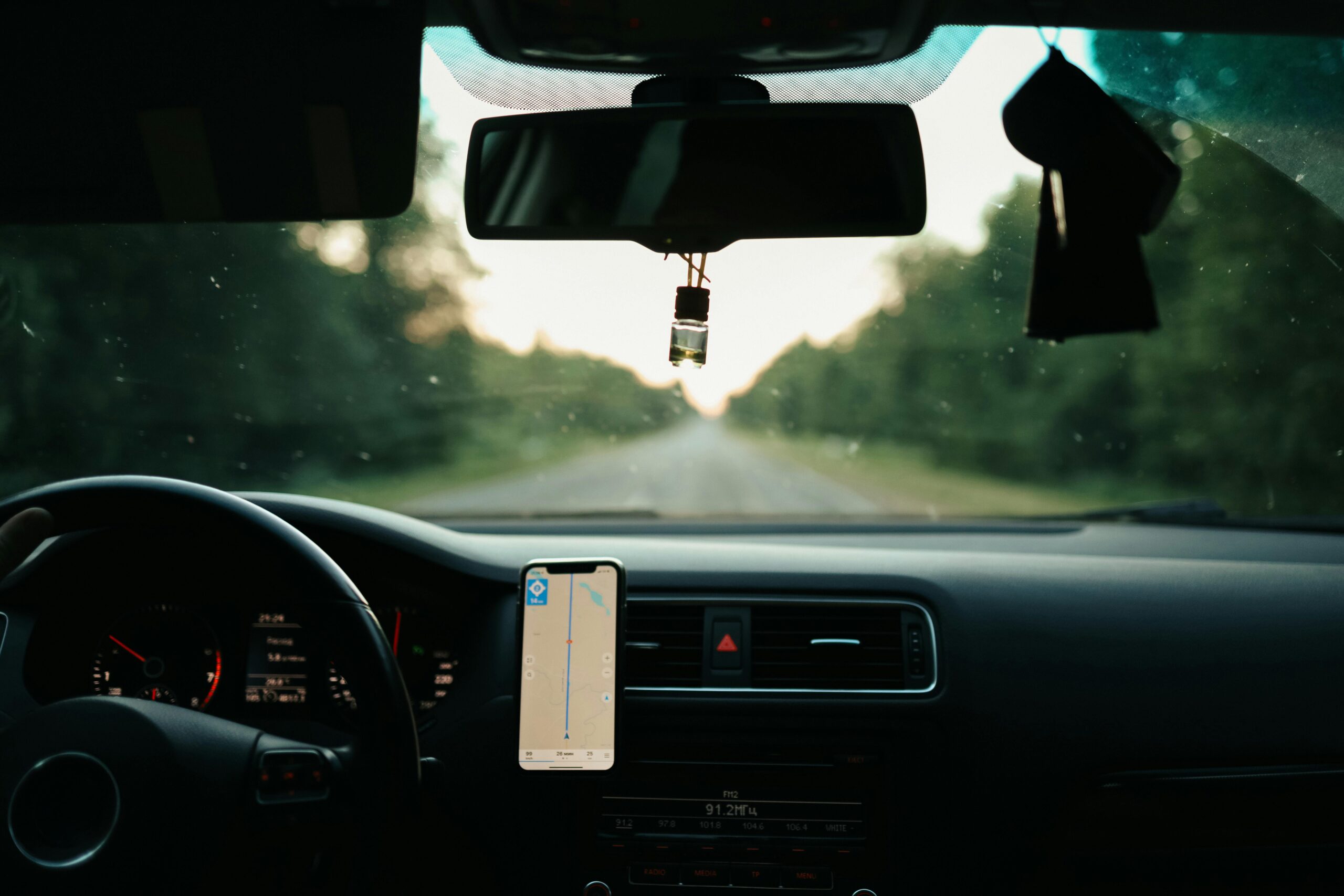
So, can you wax paint protection film for extra gloss? Absolutely. Waxing is a safe and effective way to enhance the appearance and longevity of your PPF—provided you use the right products and techniques.
Whether you choose traditional wax or opt for a ceramic coating, regular maintenance is key to keeping your car looking showroom-ready. From weekly washes to quarterly treatments, a little effort goes a long way in preserving your investment. In conclusion, paint protection film really sets your vehicle apart from others, making it an investment worth making.


